64. The central
vertical line in maitaki could have been intended to
indicate a line of measurement in the night and possibly defined from the right
ascension position of some well known star:

 |
42 |
 |
3 |
 |
11 |
 |
|
Ga7-8 |
Ga8-17 (220 = 300 - 80) |
Ga8-21 |
Ca5-12 (117) |
|
CLOSE TO THE SUN: |
|
SEPTEMBER 14 (*177) |
42 |
OCTOBER
27 (300) |
3 |
OCTOBER 31 (*224) |
11 |
NOVEMBER 12 (*236) |
|
VRISCHIKA (*241) |
Φ Sagittarii
(*284) |
NUNKI (*288) |
ALTAIR (*300) |
|
CLOSE TO THE FULL MOON: |
|
MARCH 15 (74) |
42 |
APRIL 27 (117) |
3 |
MAY
1 (*41) |
11 |
MAY 13
(*53) |
|
ZAURAK (*58) |
SIRIUS
(*101) |
ALZIRR (*105) |
AZMIDISKE (*117) |
|
60 |
In for instance
Ga8-17 we should notice how OCTOBER 27 (day 300 counted
from JANUARY 1) corresponded to right ascension day 220
counted from 0h (at the time when Hyadum II rose with
the Sun at 0h).

This makes it possible for us to deduce that
the glyph number at Ga7-8 has to be 177 (= 6 * 29½) and
that at Ga8-21 the glyph number in the text must be 224
(= 7 * 32).
For glyph number
117 (= 9 * 13) at Ca5-12 there was another rule. The
text on side a of the C tablet was not beginning at
heliacal Hyadum II but probably when 0h at the time of
rongorongo was at the Full Moon, i.e. when the Sun
reached Alchita (the point of the beak of Raven):
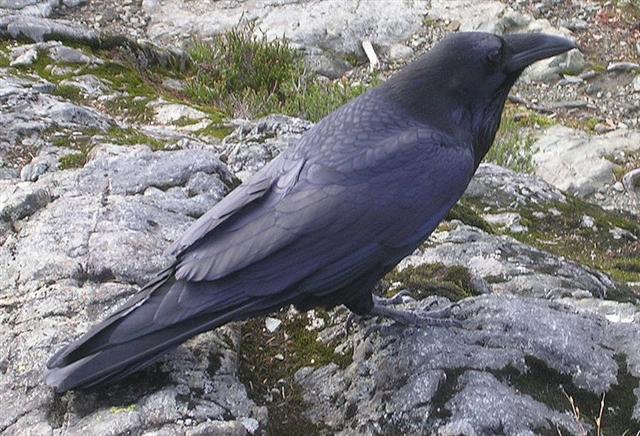
|
no
glyph |
 |
 |
 |
 |
 |
 |
|
Ca1-1 |
Ca1-2 |
Ca1-3 |
Ca1-4 |
Ca1-5 |
Ca1-6 |
|
koia |
ki te hoea |
ki te
henua |
te rima
te hau tea |
haga i
te mea ke |
ki te
henua - tagata honui |
|
CLOSE TO THE SUN: |
|
JULY 18 |
19
(200 = 264 - 64) |
20 |
21 |
22 /
7 (π) |
23 |
24
(*125) |
|
ºSept 16
|
17
(260) |
18 (*181) |
19 |
20 |
21 (264) |
EQUINOX
|
|
ALCHITA
= α Corvi,
MINKAR (Beak)
= ε Corvi |
PÁLIDA (Pale)
= δ
Crucis |
GIENAH (Wing)
= γ
Corvi, ζ Crucis |
CHANG SHA (Long Sand-bank)
= ζ Corvi |
INTROMETIDA
= ε Crucis,
ACRUX
= α Crucis |
ALGORAB
= δ Corvi,
GACRUX
= γ Crucis |
AVIS
SATYRA
= η
Corvi,
KRAZ
= β Corvi |
|
Sept
20
'Aug
24 |
(264
= 237 + 27)
(237 = 242 -
5) |
EQUINOX
26 |
23
(266)
27 |
24
28
(240) |
25 (*5 + 183)
29 |
(59
+ 183 + 27)
30
(242 = 11 * 22) |
|
"Aug
10 |
11 |
12 |
13 |
14 |
15
(227) |
16 |
|
CLOSE TO THE FULL MOON: |
|
JAN
16 (*301) |
17 |
18 |
19 |
20 |
21 |
22 |
|
ºMarch 17 |
18 (*362) |
19 (78) |
20 |
21 (0h) |
22 |
23 |
|
SIRRAH (Navel of the Horse) |
ALGENIB PEGASI |
|
|
|
ANKAA |
|
|
March 21 (0h)
'Febr 22 |
22
TERMINALIA |
23
24 |
24
(83)
25 |
JULIAN EQUINOX
26 |
26
27 |
27
28
(59) |
|
"Febr 8 |
9 |
10 |
11 |
12 |
13 |
14
(45) |
Counting 117 glyphs (days) from 0h at the
Full Moon will
lead us from Sirrah (the Navel of the Sun Horse) to Azmidiske (ξ
in Argo Navis), which would rise with the Sun 183
days later in day January 15 (365 + 15 = 380):
|
AZMIDISKE |
|
CLOSE TO THE FULL MOON: |
CLOSE TO THE SUN: |
|
*117 |
*300
= 117 + 183 = 236 + 64 |
|
October 24 (197) |
January 15 (380) |
At the time when heliacal Hyadum II was at 0h
Azmidiske would have risen with the Sun 64 days earlier:
|
AZMIDISKE |
|
CLOSE TO THE FULL MOON: |
CLOSE TO THE SUN: |
|
*53
= *117 - 64 |
*236
= 53 + 183 = 8 * 29½ |
|
MAY
13 (133 = 197 - 64) |
NOVEMBER 12 (316) |
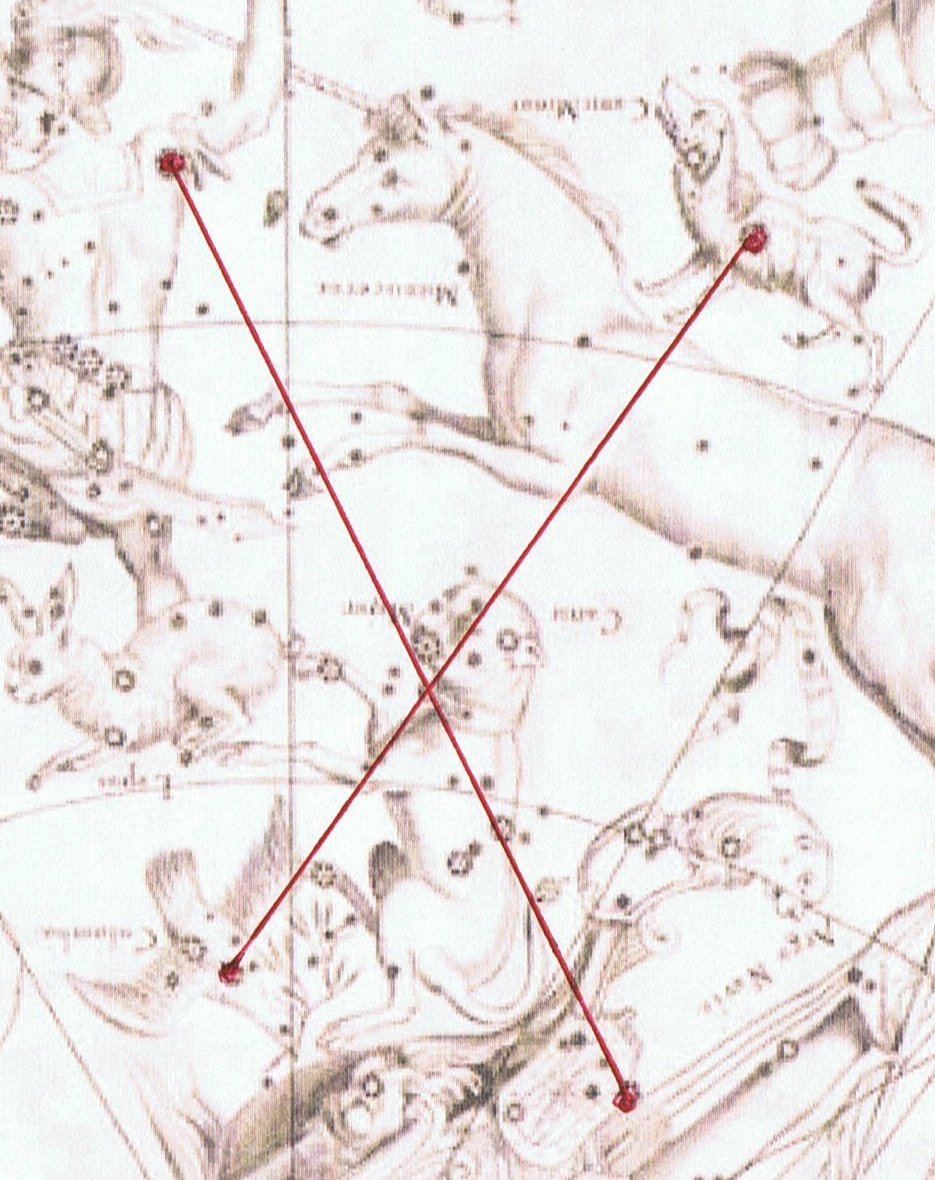
 |
 |
 |
 |
 |
| Ca5-12 |
Ca5-13 (118) |
Ca5-14 |
Ca5-15 |
Ca5-16 (121) |
| te maitaki |
te henua |
kua haga te mea ke |
manu puoko i tona ahi |
kua heu te huki |
| CLOSE TO THE SUN: |
| January 15
'December 19
NOVEMBER 12 |
16
20
13 |
17
SOLSTICE
14 |
18
22
15 |
19 (384)
23 (357)
16 (320) |
| ALTAIR (*300) |
φ Aquilae |
|
τ Aquilae |
|
| CLOSE TO THE FULL MOON: |
| July 16
'June 19
"June 5
MAY 13 |
17
20
6 (157)
14 |
18
SOLSTICE
7
(500 = 135 + 365) |
19 (200)
22 (173)
8
16 (136) |
20 (*121)
23 (*94)
9 (*80)
17 (*57) |
| AZMIDISKE (ξ) |
φ Gemini (*118) |
DRUS (χ) |
ω Cancri |
NAOS (ζ) |
A straight line from Betelgeuze at the right armpit of Orion down to Azmidiske in Argo Navis went through Sirius at the nowadays short nose of Canis Major.
Perhpas the Great Dog (Sirius, the brightest
star in the night) had to be present in order to realight
the Old Fire, the daytime Sun. Sirius went hand in hand
with the Sun.
... The
Sothic cycle was based on what is referred to in
technical jargon as 'the periodic return of the heliacal
rising of Sirius', which is the first appearance of this
star after a seasonal absence, rising at dawn just ahead
of the sun in the eastern portion of the sky. In the
case of Sirius the interval between one such rising and
the next amounts to exactly 365.25 days - a
mathematically harmonious figure, uncomplicated by
further decimal points, which is just twelve minutes
longer than the duration of the solar year
...
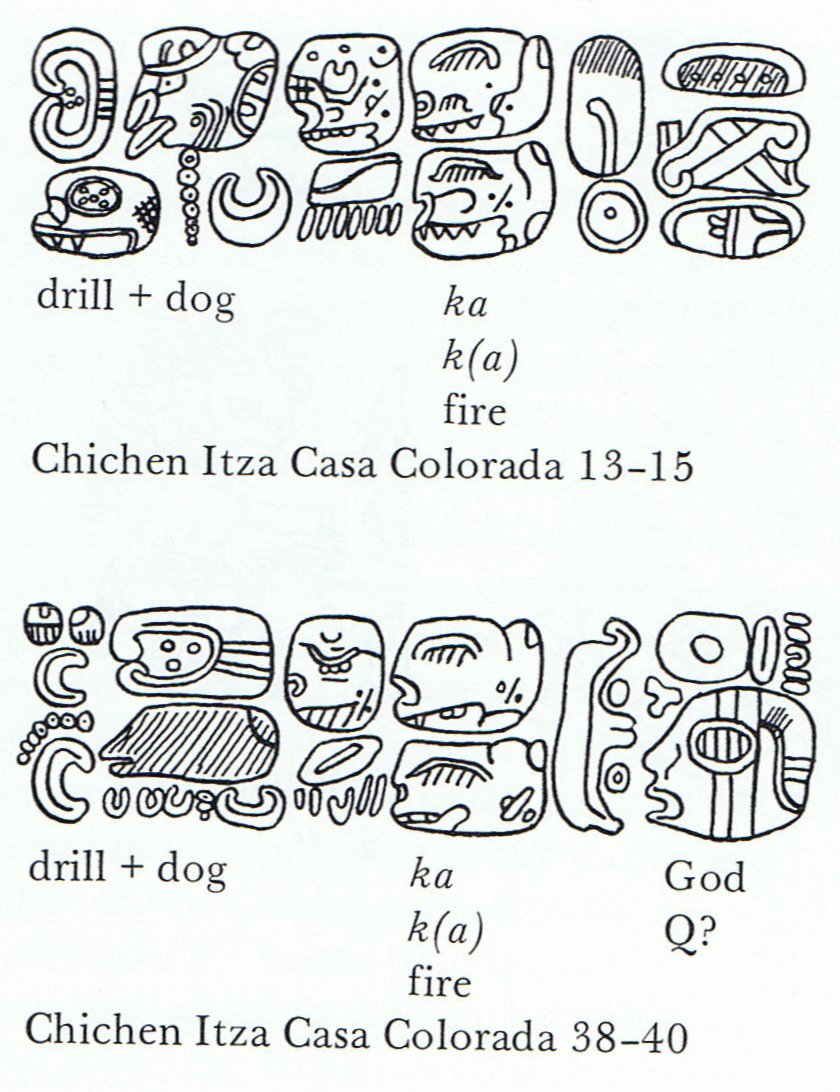
| Ka
Ka. Particle of the
affirmative imperative, of cardinal numerals, of
independent ordinal numerals, and of emphatic
exclamation, e.g. ka-maitaki! how nice!
Vanaga.
Ká. 1. To light a fire
in order to cook in the earth oven (see umu):
he-ká i te umu, he-ká i te kai. 2.
Figuratively: to fire up the soul. To put
oneself in a fury (with manava): ku-ká-á
toona manava he has become furious. Vanaga.
1. Of T. 2. Imperative sign;
ka oho, ka tere, ka ea,
begone!; ka ko iha, a greeting T; ka
mou, hush; ka oho, goodbye. 3.
Infinitive sign; mea meitaki ka rava, a
thing good to take; ka harai kia mea, to
accompany. 4. A prefix which forms ordinals from
cardinals. 5. The dawning of the day. 6.
Different (? ke). Churchill. |


From Sirius the path then went to the tail of the old ship
(canoe) who had gone down.
Easter Island was south of the
equator, where the canoe of the Explorers had landed
safely with fire onboard:
... Again
they went on and reached Hanga Hoonu. They saw
it, looked around, and gave the name 'Hanga Hoonu A
Hau Maka'. On the same day, when they had reached
the Bay of Turtles, they made camp and rested. They all
saw the fish that were there, that were present in large
numbers - Ah! Then they all went into the water, moved
toward the shore, and threw the fish (with their hands)
onto the dry land. There were great numbers (?
ka-mea-ro) of fish. There were tutuhi,
paparava, and tahe mata pukupuku. Those were
the three kinds of fish.
After they
had thrown the fish on the beach, Ira said, 'Make
a fire and prepare the fish!' When he saw that there was
no fire, Ira said, 'One of you go and bring the
fire from Hanga Te Pau!' One of the young
men went to the fire, took the fire and provisions (from
the boat), turned around, and went back to Hanga
Hoonu. When he arrived there, he sat down. They
prepared the fish in the fire on the flat rocks, cooked
them, and ate until they were completely satisfied. Then
they gave the name 'The rock, where (the fish) were
prepared in the fire with makoi (fruit of
Thespesia populnea?) belongs to Ira' (Te
Papa Tunu Makoi A Ira). They remained in Hanga
Hoonu for five days ...
These 5 days was the distance
from Anakena 18, when the Explorers went from
Hanga Takaure, to Anakena 23 when they
reached Rangi Meamea:
|
ST JOHN'S DAY |
JUNE 25 |
26
(177) |
27 |
 |
 |
 |
 |
|
Ga4-12 |
Ga4-13 (96) |
Ga4-14 |
Ga4-15 |
|
p
Carinae
(159.3) |
φ
Hydrae
(160.3) |
no
star listed (161) |
VATHORZ POSTERIOR = θ Carinae
(162.1),
PEREGRINI = μ Velorum,
η Carinae (162.6) |
|
August 27 |
28
(240) |
29
(*161) |
30 |
|
°August 23 |
24
(236) |
25 (*157) |
26 |
|
'July 31 |
'August 1 |
2
(214) |
3
(*500) |
|
"July 17 |
Anakena 18 |
19
(200) |
20
(*121) |
|
NAKSHATRA DATES: |
|
CHRISTMAS EVE |
DECEMBER 25 |
26
(360) |
27 |
|
η
Aquarii
(342.1), σ Gruis (340.4),
SITULA = κ Aquarii
(342.7) |
ε Piscis Austrini
(343.5), ο Pegasi, β Gruis (343.8) |
ρ Gruis (344.0),
MATAR = η Pegasi
(344.2), η Gruis (344.6), β Oct. (344.7) |
λ Pegasi (345.0), ξ
Pegasi (345.1), ε Gruis (345.3), τ Aquarii
(345.7), ξ Oct. (345.8), μ Pegasi (345.9) |
|
February 26 |
27
(58) |
28
(424) |
March 1 (*345) |
|
°February 22 |
TERMINALIA |
24
(55) |
25 |
|
'January 30 (*315) |
31 |
'February 1 (32) |
2 |
|
"January 16 (*301) |
17 |
18 (383) |
19 |
|
JUNE
28 |
29
(180) |
SIRIUS |
JULY
1 (*102) |
 |
 |
 |
 |
|
Ga4-16 |
Ga4-17 (100 = 180 - 80) |
Ga4-18 |
Ga4-19 |
|
ν
Hydrae (163.1) |
no
star listed (164) |
Wings-27
η
Oct. (165.4),
ALKES = α Crateris
(165.6) |
ANA-TIPU-4
(Upper-side-pillar - where the guards stood)
MERAK = β Ursae Majoris
(166.2),
DUBHE = α Ursae Majoris
(166.7) |
|
August 31 |
September 1 |
2
(*165) |
3
(246) |
|
°August 27 |
28 |
29
(*161) |
30
(242) |
|
'August 4 (216) |
5
(*137) |
6 |
7 |
|
"July 21 |
22 / 7 |
Anakena 23
(204) |
24
(*125) |
|
NAKSHATRA DATES: |
|
DECEMBER 28 |
29 |
30
(364) |
31
(*285) |
|
ι Cephei (346.0), λ
Aquarii, γ Piscis Austrini, σ Pegasi (346.5) |
SCHEAT AQUARII = δ Aquarii
(347.0), ρ Pegasi (347.2), δ Piscis Austrini
(347.4),
FOMALHAUT = α Piscis Austrini,
τ Gruis (347.8) |
FUM
AL SAMAKAH = β Piscium
(348.3), ζ Gruis (348.5),
ο
Andromedae
(348.9) |
Al
Fargh al Mukdim-24 /
Purva Bhādrapadā-26 /
House-13
SCHEAT PEGASI = β Pegasi,
π Piscis Austrini (349.3), κ Gruis (349.4),
MARKAB PEGASI = α Pegasi
(349.5) |
|
March 2 |
3 |
4 (*348) |
5
(64) |
|
°February 26 |
27 |
28
(*344) |
°March 1 (60) |
|
'February 3 |
4 |
5
(36) |
6
(*322) |
|
"January 20 |
21 |
22 |
23
(*308) |
There were indeed 3 kinds of fishes in
this region of the night sky,
viz. the stars in Piscis Austrinus and the stars in the
pair of Pisces.
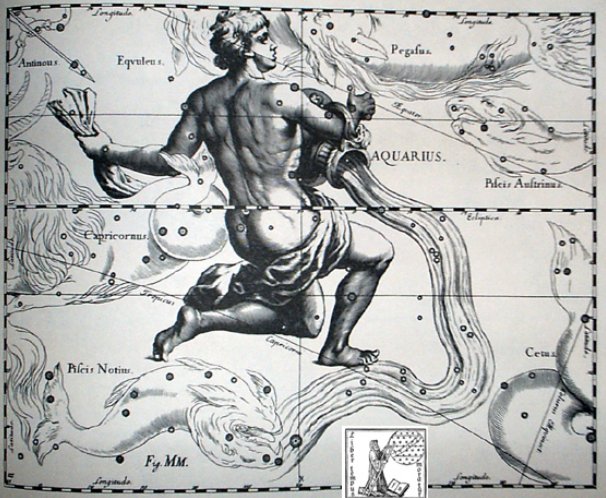
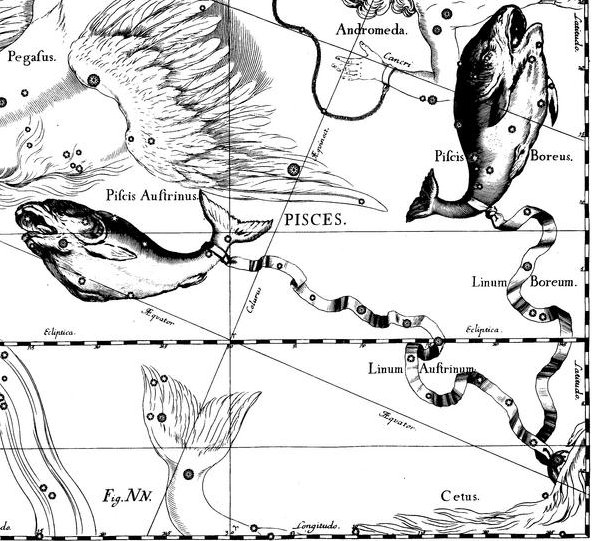
|
Piscis Notius |
Piscis Austrinus |
Piscis Boreus |
|
tutuhi |
paparava |
tahe mata pukupuku |
The Explorers stayed 5 days at
Hanga Hoonu, but the right ascension distance from
the Mouth of the Fish (Fomalhaut) to for instance
η Andromedae was greater:























